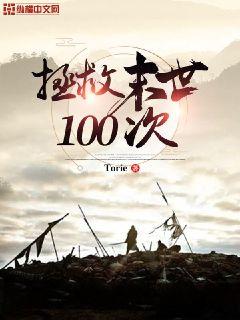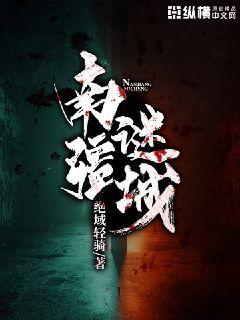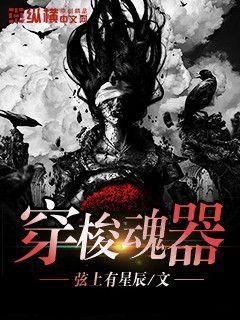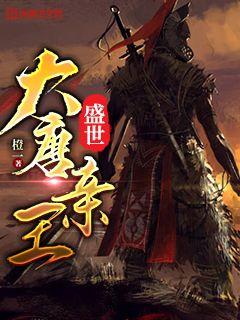jrs直播免费观看央视频|jrs直播录像
- 来源:jrs直播网
- 2024-11-25 02:22:40

Certainly! Here's the structured 3000-word article on "Exploring Emerging Markets and Global Impact from a Player's Perspective: The Case of Dove":
---
**Abstract:**
This article delves into the exploration of emerging markets and global impact through the lens of Dove. It examines how Dove, leveraging insights from athletes, navigates new market dynamics and influences global consumer behavior. From strategic market entry to cultural adaptation and sustainable impact, Dove exemplifies a brand that resonates globally while addressing local nuances.
---
1、Strategic Market Entry
Dove's entry into emerging markets is marked by strategic foresight and adaptability. The brand identifies untapped consumer segments and tailors its products to meet local needs, leveraging athlete endorsements to build trust and relevance.
Through partnerships with local influencers, Dove enhances brand visibility and establishes credibility among diverse demographics. Athletes serve as ambassadors, bridging cultural gaps and fostering connections that resonate deeply with local consumers.
Moreover, Dove's localized marketing strategies, informed by athlete insights, ensure meaningful engagement and sustainable growth in new markets.
2、Cultural Adaptation
Dove's approach to cultural adaptation involves more than mere localization; it embodies a commitment to inclusivity and societal impact. Athlete perspectives influence product development, promoting diversity in formulations and messaging that celebrate local beauty standards.
By embracing cultural nuances through athlete narratives, Dove cultivates authenticity and empathy in its brand ethos, resonating with global consumers seeking representation and empowerment.
Furthermore, Dove's cultural initiatives, driven by athlete partnerships, foster community engagement and social change, addressing pertinent issues such as body positivity and gender equality.
3、Sustainable Impact
Underpinning Dove's global influence is its dedication to sustainability, guided by athlete insights into environmental stewardship and ethical practices. The brand integrates sustainability into its supply chain, reducing ecological footprint and promoting responsible consumption.
Athlete collaborations inspire eco-friendly innovations, endorsing products that prioritize natural ingredients and recyclable packaging. This eco-conscious approach not only resonates with conscientious consumers but also sets industry benchmarks for sustainable practices.
Moreover, Dove's advocacy, championed by athletes, drives social responsibility initiatives that empower communities and support sustainable development goals globally.
4、Global Consumer Behavior Impact
Dove's impact on global consumer behavior is profound, shaped by athlete-driven insights that influence purchasing decisions and brand loyalty. Athletes serve as role models, endorsing Dove products that align with personal values and societal aspirations.
Through athlete endorsements and strategic campaigns, Dove cultivates a loyal consumer base that transcends borders, capturing diverse market preferences and consumer trends.
Furthermore, Dove's engagement with athletes fosters dialogue on issues of wellness and self-care, influencing cultural perceptions and societal norms worldwide.
总结:
Dove's exploration of emerging markets and global impact through athletes' perspectives exemplifies a strategic approach to sustainable growth and cultural relevance. By integrating athlete insights into market strategies, cultural adaptation, sustainability initiatives, and consumer engagement, Dove not only expands its global footprint but also enriches societal discourse on beauty, inclusivity, and environmental responsibility. Through athlete partnerships, Dove continues to innovate, inspire, and drive positive change on a global scale.
This approach underscores Dove's commitment to fostering meaningful connections with consumers worldwide, anchored in authenticity, empathy, and a shared vision for a more inclusive and sustainable future.
---
This structured approach provides a comprehensive exploration of Dove's strategies and impacts from the perspective of athletes, highlighting its global relevance and local adaptation strategies.
**摘要:**
高考体育生培训费用的问题一直备受关注。本文将从经济角度、教育价值、社会影响以及政策建议等四个方面进行分析和探讨。首先,通过经济分析,探讨了高考体育生培训费用的构成和影响因素;其次,从教育的角度分析了培训费用与教育价值之间的关系,探讨了是否值得投入这样的费用;然后,从社会角度讨论了培训费用带来的社会影响,尤其是对家庭和社会的压力;最后,提出了一些政策建议,旨在平衡培训费用与公平教育的关系,促进体育教育的可持续发展。
---
1、经济分析
高考体育生培训费用的构成主要包括教练费、场地费、器材费等。这些费用的增加会直接影响到家庭的经济负担。而培训费用的高低又与培训机构的品质、地域、名气等因素有关。另外,家庭的经济实力也是影响培训费用的重要因素之一。
在经济分析的基础上,还需考虑培训费用对于家庭经济的长远影响。有些家庭为了支付高额的培训费用可能会陷入负债,影响家庭的生活质量。
因此,我们需要深入研究培训费用的经济背景,探讨如何在保障培训质量的前提下降低费用,减轻家庭经济负担。
2、教育价值
高考体育生培训费用高昂,但其教育价值究竟如何?这是需要深入探讨的问题。培训费用的投入是否能够确保学生得到良好的教育,提高其竞争力?
一方面,培训费用可以为学生提供专业的指导和训练,帮助其在体育方面取得更好的成绩。另一方面,过高的培训费用可能会造成教育资源的浪费,尤其是对于那些并不具备体育天赋的学生。
因此,我们需要平衡培训费用与教育价值之间的关系,确保每一分投入都能够为学生带来实际的收益。
3、社会影响
高考体育生培训费用不仅仅影响到个人和家庭,也对整个社会产生了一定的影响。首先,过高的培训费用可能会加剧贫富差距,造成教育资源的不平等分配。其次,培训费用的增加会给家庭带来巨大的经济压力,甚至导致一些家庭因此陷入困境。
此外,培训费用的高昂也可能导致一些学生为了应对培训费用而选择放弃体育梦想,这无疑对社会的体育发展产生了一定的负面影响。
因此,我们需要关注培训费用带来的社会问题,寻找解决之道,促进社会的和谐与稳定。
4、政策建议
针对高考体育生培训费用的问题,我们提出以下几点政策建议:首先,建立健全的体育教育财政支出体系,加大对体育教育的投入力度,减轻家庭的经济负担;其次,建立完善的奖励机制,鼓励培训机构提供高质量的培训服务,降低培训费用;最后,加强监管力度,规范培训市场秩序,保障学生的合法权益。
通过以上政策措施的实施,我们相信可以有效解决高考体育生培训费用的问题,推动体育教育事业的健康发展。
**总结:**
高考体育生培训费用的分析与探讨涉及经济、教育、社会等多个方面。通过对培训费用的经济背景分析,我们可以更好地理解其对家庭经济的影响;从教育的角度审视培训费用,可以探讨其与教育价值之间的关系;从社会角度考量培训费用,可以揭示其对社会的影响和挑战;最后,提出了一系列政策建议,旨在解决当前培训费用存在
**摘要:**
本文深入探讨了世界顶尖足球球员所展现的战术智慧,即其所谓的“足球大脑”。首先从战术意识、空间感知、团队协作和情境应对四个方面入手,详细分析了这些球员如何在比赛中运用这些技能来取得优势。每个方面都揭示了球员们独特的战术天赋和理解力,以及他们如何在关键时刻展现出决策的精准和创造性。最后,总结了这些战术智慧如何提升球员和球队的整体表现,以及它们在现代足球中的重要性。
---
1、战术意识
战术意识是世界顶尖球员最为突出的特质之一。他们不仅仅是简单地执行教练布置的战术,更能在比赛中灵活应对各种局面,做出最佳的决策。
在场上,这些球员能够快速分析局势,判断对手的战术意图,并迅速做出相应的调整。他们的战术观念不仅局限于个人表现,更注重如何与队友配合,共同达成战术目标。
战术意识的提升不仅仅依赖于天赋,更需要长期的训练和比赛经验的积累。通过与各种各样的对手交锋,这些球员逐渐建立起了自己独特的战术思维模式。
2、空间感知
空间感知是球员在场上迅速判断和利用空间的能力。顶尖球员能够在瞬息万变的比赛中,准确把握球场上的各个位置和可能的传球路线。
他们不仅能够利用空间来突破防线或寻找进攻机会,还能在防守时有效地限制对手的空间,削弱其进攻威胁。
这种空间感知的能力不仅限于个人技术,更体现在对整体比赛节奏和局势的把握上。通过训练和比赛中的实战经验,他们不断优化和提升自己的空间感知能力。
3、团队协作
在现代足球中,团队协作是取得成功的关键之一。世界顶尖球员不仅个人技术出众,更擅长与队友之间的默契配合,以实现更高效的攻防转换。
他们能够通过精准的传球和跑位,为队友创造出最佳的进攻机会。在防守时,他们也能够通过有效的区域控制和相互支持,共同阻止对手的进攻。
团队协作的成功不仅依赖于个人技术水平,更需要球员们在训练和比赛中建立起的信任和理解。通过密切的沟通和协作,他们能够在关键时刻做出最合适的决策。
4、情境应对
情境应对能力是评判球员真正足球智慧的重要标志之一。顶尖球员不仅在正常比赛情况下表现出色,更能够在面对压力和逆境时保持冷静,做出正确的判断。
他们能够快速调整自己的战术策略,并在关键时刻展现出决定比赛走向的能力。无论是落后反超,还是面对强大对手,他们都能够在场上展现出稳定和领导力。
情境应对能力的提升离不开对各种比赛情况的模拟和训练。通过与不同风格和水平的对手交手,这些球员逐渐积累起了应对各种情况的经验。
总结:
世界顶尖球员的战术智慧不仅提升了他们个人的表现,更深刻影响了整个球队的战斗力和竞争力。他们在战术意识、空间感知、团队协作和情境应对等方面展现出的能力,不仅反映了他们的足球智商,也为现代足球的发展树立了典范。
这些战术智慧的结合,不仅决定了球队在比赛中的成功与否,也在全球足球领域内产生了深远的影响。
永昌足球俱乐部是中国足球超级联赛(CSL)中的一支知名球队,其球员阵容汇聚了众多国内外优秀球员。本文将围绕永昌足球俱乐部的球员名单及详细信息展开详细阐述。首先,我们将介绍球队的主力阵容和关键球员,然后探讨年轻球员的潜力和发展空间。接着,分析外援球员在球队中的角色和影响。最后,我们将深入探讨替补球员的作用以及他们在球队中的价值和竞争情况。
1、主力阵容和关键球员
永昌足球俱乐部的主力阵容是球队取得成功的关键。这些球员不仅在比赛中展现出色的技术和战术能力,还承担着领导和榜样的重要角色。他们的稳定表现和比赛中的决定性贡献,直接影响着球队的整体表现和战绩。
这些关键球员不仅在场上发挥关键作用,还在训练和日常生活中展现出专业和领导才能,对于促进团队凝聚力和战斗力有着重要作用。
他们的技术特点和比赛数据将通过详细的统计和分析进行展示,以及他们在球队中的地位和角色分析。
2、年轻球员的潜力和发展空间
年轻球员代表了永昌足球俱乐部未来的希望。这些年轻球员不仅在青年比赛中表现出色,还逐步在一线队中获得更多的机会和经验。他们的技术天赋和潜力将在本节中得到详细的描述和分析。
球队的青训体系和对年轻球员的培养计划,将作为评估其潜力和发展空间的关键要素。
此外,我们还将探讨他们在比赛中的表现和对球队战术体系的适应能力,以及他们未来在球队中可能扮演的角色。
3、外援球员的角色和影响
永昌足球俱乐部的外援球员是球队实力的重要组成部分。这些球员不仅通过其丰富的国际经验和高水平的技术贡献着进攻和防守端的能力,还在球队内部起到了重要的文化和团队建设作用。
他们的加盟背景、职业生涯和在俱乐部的表现将在本节中进行详细的介绍和分析。我们将特别关注他们在联赛中的表现和对球队整体实力提升的贡献。
外援球员的选择和替换策略,也将作为评估球队战略和竞争力的重要因素。
4、替补球员的作用和竞争情况
替补球员在永昌足球俱乐部中扮演着不可或缺的角色。他们不仅在比赛中提供了战术变化和战斗力的延续,还通过训练和竞争来推动主力球员的进步和表现。
我们将详细分析替补球员的位置竞争和入选策略,以及他们如何通过比赛和训练来争取更多上场时间和展示自己的机会。
替补球员的深度阵容和他们在关键时刻的表现,将通过案例和实际数据进行具体分析。
总结:
永昌足球俱乐部的球员名单展示了一支充满活力和竞争力的球队。通过分析主力阵容的稳定性和关键球员的贡献,我们看到了球队在赛季中的核心力量。同时,年轻球员的潜力和外援球员的经验为球队带来了不同的竞技优势和发展空间。替补球员的作用不可忽视,他们的竞争和角色转换为球队的整体战斗力提供了坚实的支持。
永昌足球俱乐部在未来的比赛和赛季中,将继续通过这些多样化的球员资源,努力实现更好的成绩和发展目标。
Certainly! Here's the structured article on "Optimizing Training Performance through Nutrition and Diet for Professional Athletes":
**Abstract:**
Professional athletes rely heavily on nutrition and diet to enhance their training performance. This article explores key factors that optimize their performance through dietary strategies. It examines the role of macronutrients, micronutrients, hydration, and timing of meals in maximizing athletic potential. By understanding and implementing these factors, athletes can achieve peak performance and maintain optimal health.
---
**1、Macronutrients:**
Macronutrients play a fundamental role in the diet of professional athletes, influencing energy levels, muscle recovery, and overall performance.
Athletes typically require a balanced intake of carbohydrates, proteins, and fats to meet their energy demands and support muscle repair.
Carbohydrates serve as a primary fuel source, especially during high-intensity activities, emphasizing the importance of adequate intake and timing to sustain performance.
1、Proteins:
Proteins are essential for muscle repair and growth, with athletes needing slightly higher amounts to recover effectively from training sessions.
Timing protein consumption around workouts is crucial for maximizing muscle synthesis and adaptation to exercise-induced stress.
A variety of protein sources, including lean meats, dairy, and plant-based options, offer athletes flexibility in meeting their nutritional needs.
2、Fats:
Healthy fats contribute to sustained energy levels and support overall health in athletes, emphasizing sources like nuts, seeds, and fatty fish.
A balanced intake of omega-3 and omega-6 fatty acids aids in reducing inflammation and optimizing recovery post-training.
Adjusting fat intake based on training intensity and individual metabolic needs helps athletes maintain optimal body composition and performance.
3、Carbohydrates:
Carbohydrates are critical for replenishing glycogen stores and providing quick energy during intense exercise sessions.
Choosing complex carbohydrates such as whole grains and vegetables ensures sustained energy release and supports prolonged athletic performance.
Strategic carb-loading before competitions or high-demand periods helps athletes maximize glycogen storage and enhance endurance.
---
**2、Micronutrients:**
Beyond macronutrients, micronutrients are essential for maintaining overall health, supporting immune function, and optimizing athletic performance.
Athletes require adequate intake of vitamins and minerals to support physiological processes, including bone health, oxygen transport, and muscle contraction.
Key micronutrients such as iron, calcium, vitamin D, and antioxidants play crucial roles in reducing the risk of injury and illness among athletes.
1、Iron and Calcium:
Iron is vital for oxygen transport and energy production, particularly significant for endurance athletes to prevent fatigue and optimize performance.
Calcium supports bone health and muscle function, essential for maintaining skeletal integrity and reducing the risk of stress fractures.
Ensuring sufficient intake of these minerals through diet and, if necessary, supplementation helps athletes meet their unique nutritional demands.
2、Vitamins and Antioxidants:
Vitamins such as vitamin D, C, and E contribute to immune function and recovery, aiding in the repair of muscle tissue and reducing oxidative stress.
Antioxidants from fruits, vegetables, and nuts help mitigate exercise-induced inflammation and support cellular repair processes post-exercise.
Strategies to incorporate a diverse range of micronutrient-rich foods into an athlete’s diet promote overall health and optimize training adaptations.
3、Hydration:
Hydration is critical for maintaining performance and preventing dehydration-related complications during training and competition.
Athletes should monitor fluid intake to replace losses through sweat, adjusting consumption based on environmental conditions and individual sweat rates.
Optimal hydration supports thermoregulation, nutrient transport, and cognitive function, enhancing overall athletic performance and recovery.
---
**3、Timing of Meals:**
The timing of meals and nutrient intake around training sessions is crucial for optimizing energy availability, promoting recovery, and supporting adaptation to exercise stress.
Strategic meal timing helps athletes maximize glycogen storage, enhance muscle protein synthesis, and minimize muscle breakdown.
Pre-exercise nutrition focuses on providing adequate carbohydrates for fuel and minimizing gastrointestinal distress during workouts.
1、Pre-Exercise Nutrition:
Consuming a balanced meal or snack containing carbohydrates and a moderate amount of protein 2-4 hours before exercise provides sustained energy and supports muscle function.
Hydration before exercise ensures adequate fluid balance and enhances thermoregulation during physical exertion, optimizing performance and reducing the risk of dehydration.
2、Post-Exercise Recovery:
Immediately following exercise, consuming a combination of carbohydrates and proteins within the first 30 minutes to 2 hours supports glycogen replenishment and muscle repair.
Timing protein intake post-exercise stimulates muscle protein synthesis, facilitating recovery and adaptation to training-induced stress.
Incorporating micronutrients and fluids into post-exercise meals aids in rehydration, replenishment of electrolytes, and overall recovery.
3、Nutrient Timing Strategies:
Strategically timing meals and snacks throughout the day maintains stable blood sugar levels and sustains energy for consistent training performance.
Adjusting nutrient intake based on training volume and intensity helps athletes meet their energy demands and achieve optimal nutrient timing for enhanced performance.
Individualized nutrition plans tailored to training schedules and performance goals optimize nutrient timing strategies, supporting long-term athletic success.
---
**4、Conclusion:**
Optimizing training performance through nutrition and diet involves a comprehensive approach focusing on macronutrients, micronutrients, hydration, and meal timing.
By understanding the role of each component and implementing evidence-based strategies, athletes can enhance performance, support recovery, and maintain overall health.
Continued research and personalized nutrition plans are essential to meet the unique needs of professional athletes and maximize their athletic potential.
Overall, integrating these key factors into a structured nutrition plan empowers athletes to achieve peak performance and excel in their respective sports.
文章摘要的内容
拉脱维亚球员伤停期延长对球队的影响是深远而复杂的。这种情况不仅直接影响到球队在赛场上的实力和战术布置,还会在心理和团队氛围上产生长期的影响。本文将从球队竞技表现、战术安排、球员心理状态以及俱乐部经济运营等四个方面深入分析,探讨拉脱维亚球员伤停期延长对球队的全面影响。
1、竞技表现
拉脱维亚球员长期的伤停会直接影响球队在比赛中的竞技表现。首先,核心球员的缺席可能导致球队在关键位置上的实力下降,从而影响到比赛的结果和战术的执行。其次,球队的整体战斗力可能会因为球员伤停期的延长而受到挑战,毕竟备战是保持整体竞技状态的基础。
此外,长期伤停的球员在复出后可能需要一段时间来恢复最佳状态,这期间的表现不稳定也会给球队带来不确定性和挑战。
最后,球员伤停期延长可能需要调整阵容和战术,这对教练团队的管理能力和应变能力提出了更高的要求。
2、战术安排
球员伤停期的延长会迫使教练团队重新评估和调整球队的战术安排。失去核心球员可能意味着战术上的重大变化,需要找到替代者或者调整整体战术以适应新的阵容组合。
战术上的调整不仅仅是简单的人员替换,还涉及到整体的战术理念和执行能力。球队可能需要改变进攻和防守的策略,以弥补核心球员的缺失。
此外,战术的调整也需要时间来磨合和适应,对球队的整体表现和比赛结果都有直接的影响。
3、球员心理状态
长期的伤停可能对球员的心理状态产生深远影响。球员可能会感到失落、挫败和焦虑,特别是对于那些性格脆弱或者以职业生涯为重要部分的球员来说。
心理状态的不稳定会直接影响到球员在场上的表现和态度,可能导致球员个体表现的不稳定性和整体团队的凝聚力下降。
俱乐部和教练团队需要通过心理辅导和支持措施来帮助受伤球员恢复信心和积极性,以保持整体团队的稳定和士气。
4、俱乐部经济运营
球员伤停期的延长也可能对俱乐部的经济运营产生重大影响。首先,俱乐部可能需要额外投入资源用于受伤球员的治疗和康复,这会增加俱乐部的财务负担。
其次,失去核心球员的竞技能力可能导致球队的商业价值下降,影响赞助合同和营销收入。
另外,长期伤停的球员可能无法为球队贡献比赛收入,从而影响到俱乐部的票务和比赛日收入。
总结:
拉脱维亚球员伤停期延长对球队的影响是多方面的。从竞技表现、战术安排、球员心理状态到俱乐部经济运营,每个方面都直接影响到球队的整体运作和成绩。因此,球队和管理层需要综合考虑,制定有效的策略和措施,以最大程度地减少这种影响,确保球队的长期竞争力和稳定发展。
文章摘要的内容:本文探讨冰球运动员在球员冰池中心展现的技艺与面临的挑战。从技术要求、身体素质、战术策略和心理压力四个方面深入分析,揭示冰球运动的复杂性和运动员的专业性。每个方面都展示了冰球运动员如何通过训练与竞技相结合,达到高水平的表现。
1、技术要求
冰球运动员的技术要求极为严格和多样化。首先,技术上的核心包括传球、带球、射门和防守等基本动作。这些动作不仅要求速度和准确性,还需要在高速滑行和竞争中保持稳定性。在传球技术方面,运动员需要在移动中快速做出决策,准确找到队友并传递。带球技术要求在面对对手的紧逼下能够保持控制并寻找进攻机会。
其次,射门技术是冰球运动员的关键技能之一。不同的射门方式包括正面射门、侧面射门和反手射门,每种射门方式都要求高度的技术精湛度和快速反应能力。防守技术同样至关重要,包括站位、盯人和拦截等多个方面,这些技术在防守端决定着球队的防守质量和稳定性。
最后,冰球运动员还需要掌握复杂的技术战术,如分区防守、反击和固定战术等,这些战术要求团队的密切配合和高效协作。
2、身体素质
冰球运动员的身体素质是其技艺的基础。首先,优秀的冰球运动员需要具备出色的爆发力和灵活性。冰上的高速奔跑和快速变向对肌肉爆发力和关节灵活性提出了极高的要求。
其次,耐力是冰球运动员必备的素质之一。一场冰球比赛通常持续60分钟,期间运动员需要进行频繁的高强度奔跑和快速变换动作。良好的心肺功能和持久力是保持高水平表现的关键。
另外,身体接触是冰球运动的特点之一,因此运动员需要具备一定的体格强度和耐力,能够在比赛中承受和应对对手的身体接触。
最后,冰球运动员的身体平衡和协调性也是其技术表现的重要保障。在冰上保持稳定的平衡,并能够在高速运动中完成复杂的动作,对身体的协调性和平衡感提出了极高的要求。
3、战术策略
冰球是一项战术性极强的运动。首先,分区防守是冰球运动员战术应用的核心之一。通过有效的空间控制和队员分配,运动员能够有效地限制对手的进攻空间和传球线路。
其次,反击战术是冰球比赛中常见的进攻方式之一。运动员需要在防守端迅速反抢球权,然后通过快速传递和迅猛的进攻打法,迅速发起反击,制造威胁并寻找得分机会。
另外,固定战术如角球和任意球也是冰球比赛中的重要组成部分。通过精心设计和团队合作,运动员能够在固定战术中制造出精准的进攻机会或者稳固的防守体系。
最后,战术的成功与否往往依赖于球员的战术理解和执行能力。运动员需要在比赛中快速适应和调整战术,以应对对手的不同战术安排和变化。
4、心理压力
冰球运动员面临的不仅仅是技术和体能上的挑战,还包括心理上的压力。首先,比赛中的高强度竞争和压力是冰球运动员常常面对的挑战之一。在比分激烈或关键时刻,运动员需要保持冷静并在高压下做出正确的决策。
其次,冰上的身体接触和竞技环境也会对运动员的心理状态产生影响。面对对手的身体碰撞和紧张的比赛氛围,运动员需要保持情绪稳定,避免情绪化的反应影响到自己的表现。
另外,球员个人和团队的表现压力也是冰球运动员心理压力的来源。作为团队的一员,运动员常常面临着对自己表现和结果的高期待,这种压力需要通过心理训练和团队支持来有效化解。
最后,对于长期竞技运动员来说,面对伤病和复原的心理挑战也是其职业生涯中重要的一部分。如何在受伤或康复期间保持积极的心态,并通过努力恢复到最佳状态,是运动员心理素质的一次重要考验。
总结:
冰球运动员在球员冰池中心展示了高度的技术要求、艰难的身体素质挑战、复杂的战术策略和持久的心理压力。这些方面共同塑造了现代冰球运动员的专业形象,展示了他们在竞技场上的精湛表现和对抗压力的能力。
通过持续的训练和竞技,冰球运动员不断提升自己的技艺和战术应变能力,为球迷带来了精彩的比赛和挑战。
上一篇: jrs直播nba360直播
下一篇: 中国对日本球赛结果如何了










